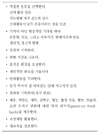Abstract
Exercise prescription for obese patients should be individualized since they are not accustomed to exercise. When we prescribe exercise for obese patients, low impact exercises such as walking, cycling, swimming are recommended. We should pay special attention to obese patients with comorbidities such as hypertension, diabetes, ischemic heart disease or osteoarthritis when we prescribe exercise. For effective weight loss, it is necessary to improve exercise compliance and increase physical activity level.
References
4. American College of Sports Medicine. ACSM's resource manual for guidelines for exercise testing and prescription. 1998. 3rd ed. Philadelphia: Lippincott Williams & Wilkins;570–577.
5. Buskirk ER. Skinner JS, editor. Obesity. Exercise testing and exercise prescription for special cases. 1993. 2nd ed. Philadelphia: Lea & Febiger;185–210.
6. Elliot DL, Goldberg L. Goldberg L, Elliot DL, editors. Exercise and obesity. Exercise for prevention and treatment of illness. 1994. 1st ed. Philadelphia: F.A. Davis Co.;211–227.
7. NIH-NHLBI. Clinical guidelines on the identification, evaluation and treatment of overweight and obesity in adults, Jun. 1998.
8. WHO. Obesity: Preventing and managing the global epidemic-Report of a WHO Consultation on Obesity. 1997. 06.




 PDF
PDF ePub
ePub Citation
Citation Print
Print






 XML Download
XML Download